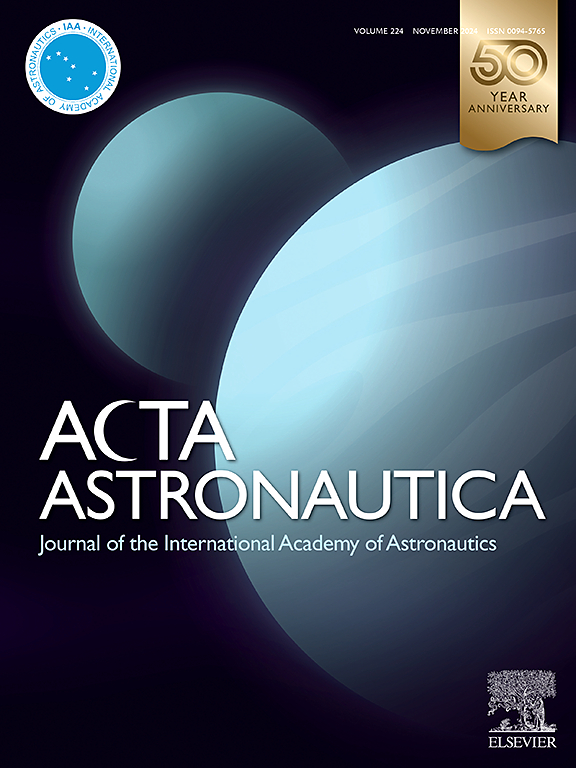Evolving governance in the space sector: From Legacy Space to New Space models
IF 3.1
2区 物理与天体物理
Q1 ENGINEERING, AEROSPACE
引用次数: 0
Abstract
The space sector is evolving from the “Legacy Space” to the “New Space”. Along with the space sector, space program governance is transitioning to support an environment where legacy and New Space actors co-exist. The aforementioned transitions and the entry of New Space players result in new governance models, as space agencies aim to exploit contributions from non-space sectors, leveraging on collaborative opportunities.
Public-private partnerships (PPPs) become a new golden rule, disclosing unprecedented achievements.
However, the existing body of knowledge lacks a framing of models of space program governance, covering both Legacy Space programs and New Space ones. It is not clear how the roles and responsibilities of stakeholders change from the Legacy Space to the New Space, alongside the related changes in contract structures and the practices space agencies favour in current space programs and projects. Therefore, our paper aims to investigate how space program governance evolved.
We performed a single-case study on NASA-led space exploration programs to investigate the transition of space program governance and its actual state-of-the-art. We co-developed and validated three governance models for space programs through semi-structured interviews with senior experts. Furthermore, we present key drivers and barriers behind the evolution towards New Space governance models.
We found and discussed three program governance models corresponding to the evolutionary stages of space exploration programs. In the Legacy Space model, the government owns space infrastructures to demonstrate technological supremacy. In the Transitional model, lumpsum contracts, transitioning between cost-plus and fixed-price, replace the legacy EPC (Engineering, Production, Construction) ones. In the New Space model, collaborative efforts and PPPs enable alignment between public and private expertise. Finally, we examine the factors that promote and impede the evolution of space governance, leading to the emergence of a polycentric governance structure observed in current space programs.
The three models enable managers to visualize space programs from a governance perspective, where stakeholders’ roles and responsibilities in PPPs are clearly identified. Moreover, managers can leverage and innovate existing practices for transitioning across different models of governance in space programs and projects.
We contribute to research by introducing a transitional governance model that enables the smooth transition between the Legacy Space and the New Space paradigms. We justify the concurrent adoption of multiple governance models within the same space program, as in the current Artemis program.
不断演变的空间部门治理:从传统空间到新空间模式
空间领域正在从 "传统空间 "向 "新空间 "演变。随着空间部门的发展,空间计划治理也在转型,以支持传统空间和新空间参与者共存的环境。公私合作伙伴关系(PPPs)成为新的金科玉律,取得了前所未有的成就。然而,现有的知识体系缺乏对空间计划治理模式的构架,既包括传统空间计划,也包括新空间计划。利益相关者的角色和责任如何从 "传统太空 "向 "新太空 "转变,以及合同结构和太空机构在当前太空计划和项目中采用的做法的相关变化,都还不清楚。因此,我们的论文旨在研究太空项目治理是如何演变的。我们对美国国家航空航天局(NASA)领导的太空探索项目进行了单一案例研究,以调查太空项目治理的过渡及其实际现状。通过对资深专家进行半结构式访谈,我们共同开发并验证了三种太空项目治理模式。此外,我们还介绍了向新太空治理模式演进背后的主要驱动因素和障碍。我们发现并讨论了三种与太空探索计划演进阶段相对应的计划治理模式。在传统太空模式中,政府拥有太空基础设施,以展示技术优势。在过渡模式中,在成本加成和固定价格之间过渡的总价合同取代了传统的 EPC(工程、生产、施工)合同。在 "新空间 "模式中,合作努力和公私伙伴关系使公共和私营部门的专业技术协调一致。最后,我们研究了促进和阻碍太空治理演变的因素,这些因素导致了当前太空项目中出现的多中心治理结构。这三种模式使管理者能够从治理的角度对太空项目进行可视化管理,其中利益相关者在公私伙伴关系中的角色和责任得到了明确的界定。此外,管理者还可以利用和创新现有实践,在太空计划和项目中过渡到不同的治理模式。我们通过引入一种过渡治理模式,实现了传统太空模式和新太空模式之间的平稳过渡,为研究做出了贡献。我们证明了在同一太空计划中同时采用多种治理模式的合理性,就像当前的阿耳特弥斯计划一样。
本文章由计算机程序翻译,如有差异,请以英文原文为准。
求助全文
约1分钟内获得全文
求助全文
来源期刊

Acta Astronautica
工程技术-工程:宇航
CiteScore
7.20
自引率
22.90%
发文量
599
审稿时长
53 days
期刊介绍:
Acta Astronautica is sponsored by the International Academy of Astronautics. Content is based on original contributions in all fields of basic, engineering, life and social space sciences and of space technology related to:
The peaceful scientific exploration of space,
Its exploitation for human welfare and progress,
Conception, design, development and operation of space-borne and Earth-based systems,
In addition to regular issues, the journal publishes selected proceedings of the annual International Astronautical Congress (IAC), transactions of the IAA and special issues on topics of current interest, such as microgravity, space station technology, geostationary orbits, and space economics. Other subject areas include satellite technology, space transportation and communications, space energy, power and propulsion, astrodynamics, extraterrestrial intelligence and Earth observations.
 求助内容:
求助内容: 应助结果提醒方式:
应助结果提醒方式:


